|
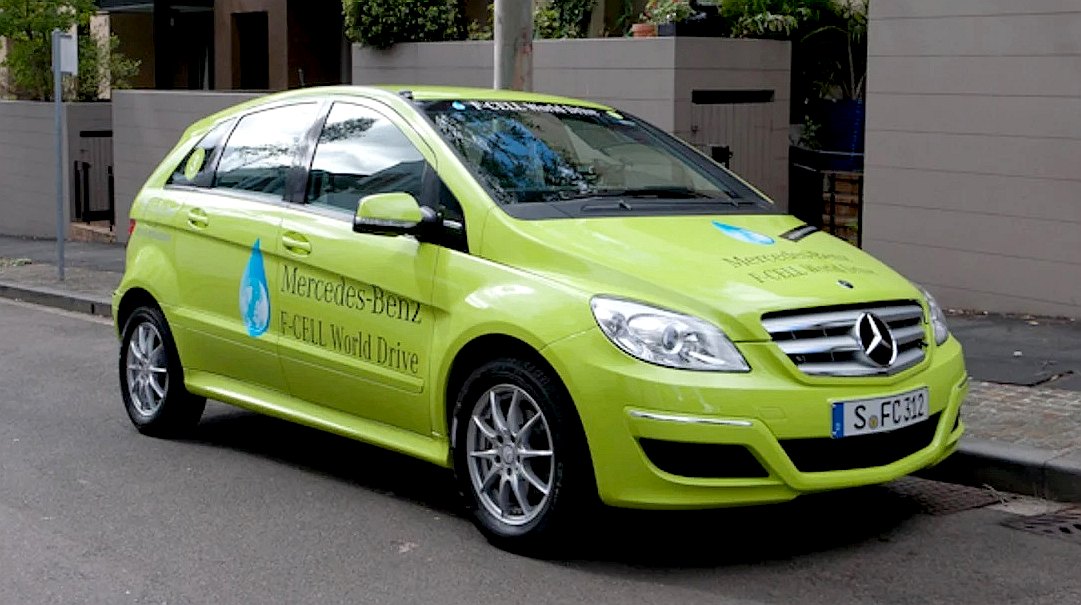
1ST LAND CIRCUMNAVIGATION IN A HYDROGEN CAR - The inventor of the motor car, Mercedes-Benz, was the first manufacturer to circumnavigate the world with a hydrogen-powered ‘fuel cell’ vehicle in 2011. It took a fleet of three identical cars (based on the company’s B-Class hatchback) on a 125-day journey to celebrate the car-maker’s 125th anniversary. The excursion started and finished in Stuttgart, Germany, taking in 14 countries.
The inventor of the motor car,
Mercedes-Benz, was the first manufacturer to circumnavigate the world with a hydrogen-powered ‘fuel cell’ vehicle.
According to the Guinness Book of World
Records, It took a fleet of three identical cars (based on the company’s B-Class hatchback) on a 125-day journey to celebrate the car-maker’s 125th anniversary. The excursion started and finished in Stuttgart, Germany, taking in 14
countries. We
could be living in a hydrogen
economy, with cheap clean transport for all
based on green
hydrogen. Green is hydrogen is produced using renewable electricity via
electrolysis and industrial electrolizers, as opposed to production from fossil
fuels, such as with Brown,
Gray, Blue
or Turquoise
hydrogen production methods. Hydrogen vehicles have been around since the
Ford Model A. Hydrogen
fuel cells have been used for years by the military and
NASA. Hydrogen is used as a
fuel with oxygen, for the Space Shuttle's external tanks, and other launch
rockets.
Mercedes-Benz wrapped up its world tour using the company's F-Cell fuel-cell vehicles on the 1st of June of 2011. The trio of hydrogen-powered futuristic hatches wandered the entire circumference of the globe and racked up around 18,641 miles each in the process. The whole shebang wrapped up in front of the Mercedes-Benz headquarters in Stuttgart – the exact location where the vehicles began their journey back in January.
The German automaker hoped that the drive will prove that fuel-cell vehicles are a viable alternative to traditional EVs and internal combustion vehicles and that lawmakers and businesses will respond by ramping up the infrastructure necessary to easily operate a fuel-cell auto.
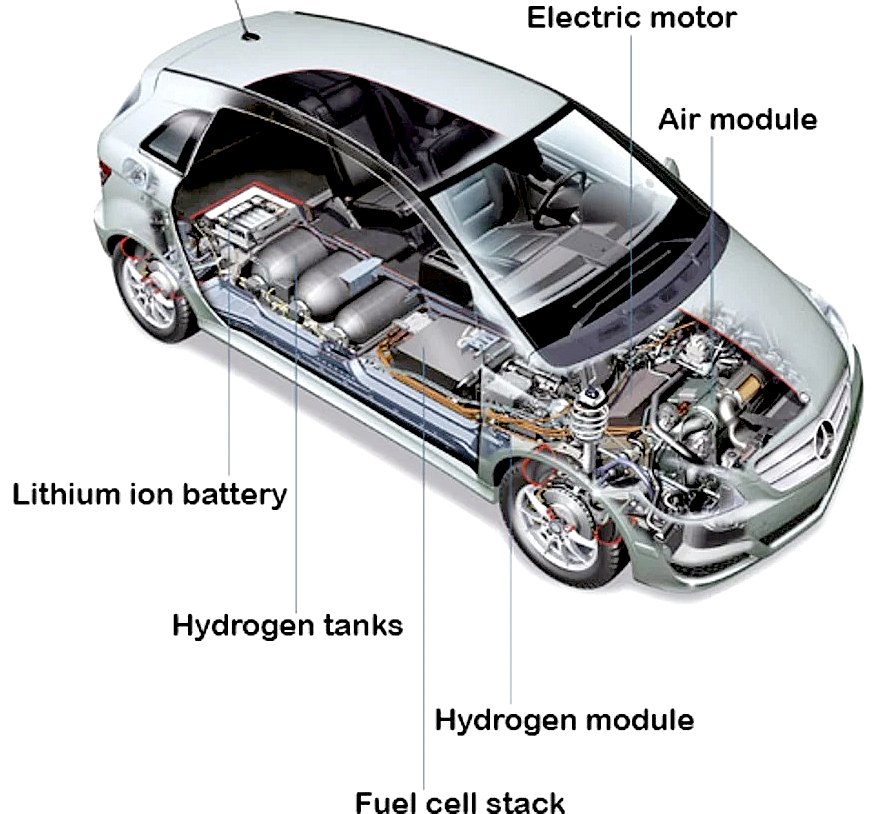
Während des F-CELL World Drive sind drei Mercedes-Benz
B-Klasse F-CELL durch 14 Länder über 4 Kontinente gefahren - einmal um den
Globus. Die von Mercedes-Benz initiierte Weltumrundung startete am 29. Januar 2011 in Stuttgart und dauert 125
Tage, bis die Fahrzeuge nach 30.000 Kilometer Fahrstrecke Anfang Juni wieder in Stuttgart erwartet
werden. Ziel der Fahrt ist, die technische Reife und Alltagstauglichkeit von Elektrofahrzeugen mit Brennstoffzelle zu demonstrieren und gleichzeitig auf die Notwendigkeit einer flächendeckenden Wasserstoff-Infrastruktur aufmerksam zu
machen. Bei der Wasserstoffversorgung auf der Tour wird der Stuttgarter Autobauer von der Linde AG unterstützt.
The
Mercedes-Benz world tour began on 30 January 2011. It was scheduled to take 125 days to complete while traversing 14 countries across four
continents, on the 125th birthday of the automobile.
The hydrogen gas powered vehicle trek began and ended at the company's headquarters in
Stuttgart, Germany. 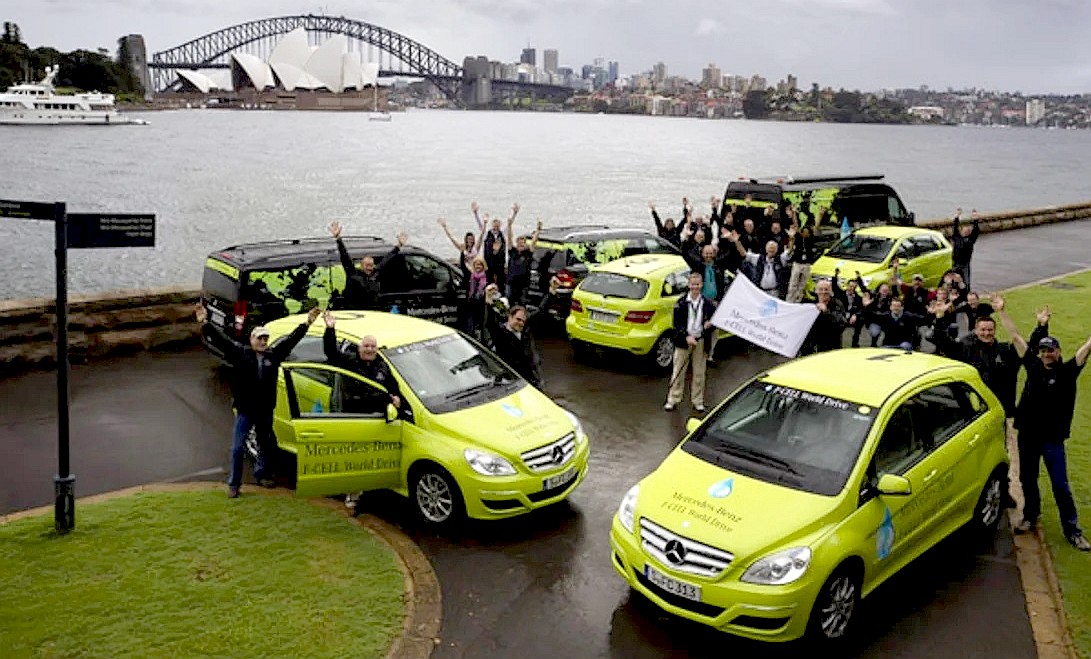
SYDNEY,
AUSTRALIA - In 2021, the Kangaroo State is gearing up to convert coal to
make brown hydrogen, in denial of climate change and circular economics,
which would dictate using renewable energy. Shame on Australia. As a
relatively new land of opportunity, even though taken from the indigenous Aborigines
(as was North America, South America, etc) one might have thought they would
be more hip. Instead, we see their former Prime Minister denying the
increasing frequency of bushfires is climate linked. Boy are we in trouble.
With all that empty space and desert sunshine, what are they playing at. At
least China might argue the terrain is not so amenable. But then again, they
can utilize the wind, but still choose to build coal-fired power stations!!!
Before arriving in Sydney for the Australian leg, the F-Cells went from Stuttgart to Lisbon via Paris, then on to Vancouver via Miami, San Antonio and Los Angeles.
In Australia the route took the F-Cells from Sydney to Perth along the coast via Melbourne and Adelaide.
For the final leg of the trip, the F-Cells will be shipped across to Shanghai, from whence they'll drive back to Stuttgart via Beijing, Xian, Moscow and Oslo. 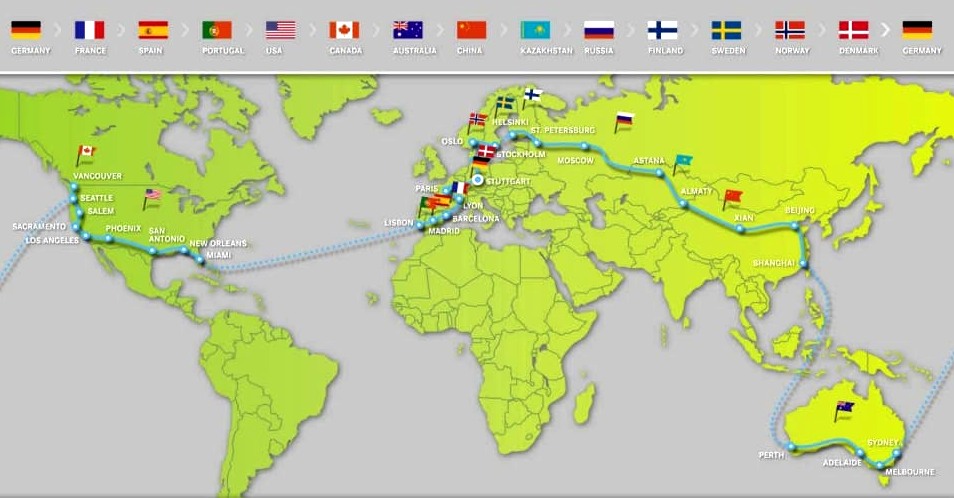
NEW YORK
MARCH 13 2011 Linde North America will support the Mercedes-Benz F-CELL World Drive, commemorating the 125th anniversary of the invention of the automobile. The drive will make stops in 32 cities in North America between February 24 and March 18.
Linde North America is part of The Linde Group, which was selected by Mercedes-Benz as the exclusive global hydrogen partner for the F-CELL World Drive, an ambitious endurance drive of three Mercedes B-Class F-CELL hydrogen-powered fuel-cell cars around the world.
The tour launched on January 30, from Stuttgart, Germany. Each of the cars will travel over 18,500 miles across four continents and 14 countries in 125 days. The vehicles will arrive in the U.S. for the North American leg of the tour -- starting in Fort Lauderdale, Florida, on February 24 and ending in Vancouver, British Columbia, Canada, on March 18. The vehicles will make fueling stops in 32 cities in between, including eight cities where Linde plants are located.
Pat Murphy, president of Linde North America is quoted as saying: "We are excited about the opportunity to participate in Mercedes-Benz’s world tour,” “It’s a great opportunity for Linde to demonstrate the capability of our hydrogen fueling
technology.” “Linde has years of hydrogen fueling experience encompassing both stationary and mobile technologies. We are proud that Mercedes-Benz has recognized this experience and our innovative capabilities and has chosen us as their exclusive hydrogen fueling partner for the
tour.”
Linde and Mercedes-Benz co-developed a new mobile 700-bar refueling unit that houses all the technology required to compress and fuel hydrogen on the move. Key design criteria include 700-bar refueling pressure and a compact footprint for easy transport by air. Linde also developed the entire hydrogen supply and logistics concept for about 400 refuelings planned around the globe, remote regions included. Linde will supply more than 600,000 normal cubic feet of hydrogen in total for the tour. 
Linde was one of the earliest entrants into the field of hydrogen fueling and is a leading supplier of hydrogen fueling systems. The company has already equipped more than 70 stations in 15 countries and has supported well over 200,000 successful hydrogen refuelings worldwide. The company is involved in many hydrogen fueling station projects throughout North America including the successful installation of hydrogen fueling stations for forklifts for Wal-Mart in Ohio. Linde is currently installing fueling stations for both buses and cars for AC Transit in Emeryville, California.
The Linde Group is a world leading gases and engineering company with 48,000 employees working in more than 100 countries worldwide. In the 2009 financial year it achieved sales of EUR 11.2 billion (USD 15.3 billion). The strategy of The Linde Group is geared towards sustainable earnings-based growth and focuses on the expansion of its international business with forward-looking products and services.
Linde acts responsibly towards its shareholders, business partners, employees, society and the environment – in every one of its business areas, regions and locations across the globe. Linde is committed to technologies and products that unite the goals of customer value and sustainable development. 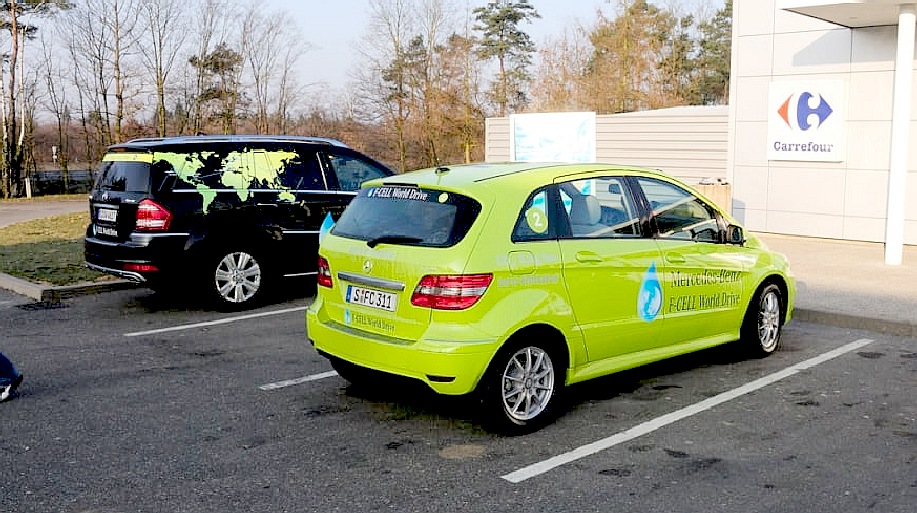
WIRED 2013 -
Three titans of the automotive industry – Renault-Nissan, Ford and Daimler (which is parent to 22 car brands, including Mercedes-Benz) – are collaborating on the development of hydrogen fuel-cell technology.
Their goal is to have hydrogen-electric cars in people’s driveways in the next five years.
We’ve heard this before, but this time it could be different. Really. Seriously. We swear.
While hydrogen fuel-cell technology has been promised, and in some cases even deployed in various forms during the last century, it has never taken off. Despite the abundance of hydrogen in the world, combined with the technology’s potential to provide a clean alternative to fossil fuels, too many hurdles – including cost, reliability and the lack of a distribution and fueling infrastructure – have stifled its development and widespread adoption.
The automotive ménage à trois aims to eliminate those issues by pooling their engineering talent, scale and power over suppliers to create a common fuel cell stack. Each automaker will throw the same amount of funding into the project to create a vehicle the consortium claims will be “affordable” and designed for the “mass market.” The cars could be available as early as 2017. Each vehicle will use the same core components, but will be built on platforms unique to each automaker, allowing for different body styles, interior configurations and branding.
“We are convinced that fuel cell vehicles will play a central role for zero-emission mobility in the future,” says Thomas Weber, board member of Daimler AG group research. “Thanks to the high commitment of all three partners we can put fuel cell e-mobility on a broader basis. This means with this cooperation we will make this technology available for many customers around the globe.”
ABOUT THE F-CELL
The B-Class F-Cell is an electric
car, but one with a difference. There's a lithium ion battery pack under the boot floor, but its primary purpose is to store energy captured from regenerative braking. The main source of energy for the electric motor is a fuel cell stack that generates
electricity by combining hydrogen stored in the car's tanks with
oxygen drawn in from the atmosphere to produce
water.
The electric motor produces 100kW of power and 290Nm of torque. While Mercedes-Benz says that the performance is comparable to a B-Class fitted with a 2-litre petrol engine, we found off-the-line acceleration to be a bit on the slow
side, but with plenty of torque for impromptu overtaking.
The B-Class features a "sandwich floor" underneath the passenger cabin, which in the F-Cell houses much of the fuel cell kit. Passenger capacity and comfort is unchanged from an
internal
combustion engine B-Class.
Under the floor, though, the spare tyre has made way for a lithium ion battery pack.
In 2011 hydrogen filling stations were scarce, with only about 200 worldwide. The situation is not much better in 2021. H2 stations were concentrated in certain places, like Germany, California and Detroit. As such, the F-Cell vehicles
traveling across Australia needed to be trailed by two refuelling trucks. The big red tanks on the semi-trailer can hold a total of about 480kg of hydrogen as compressed gas, supplied by the British Oxygen Company (BOC). 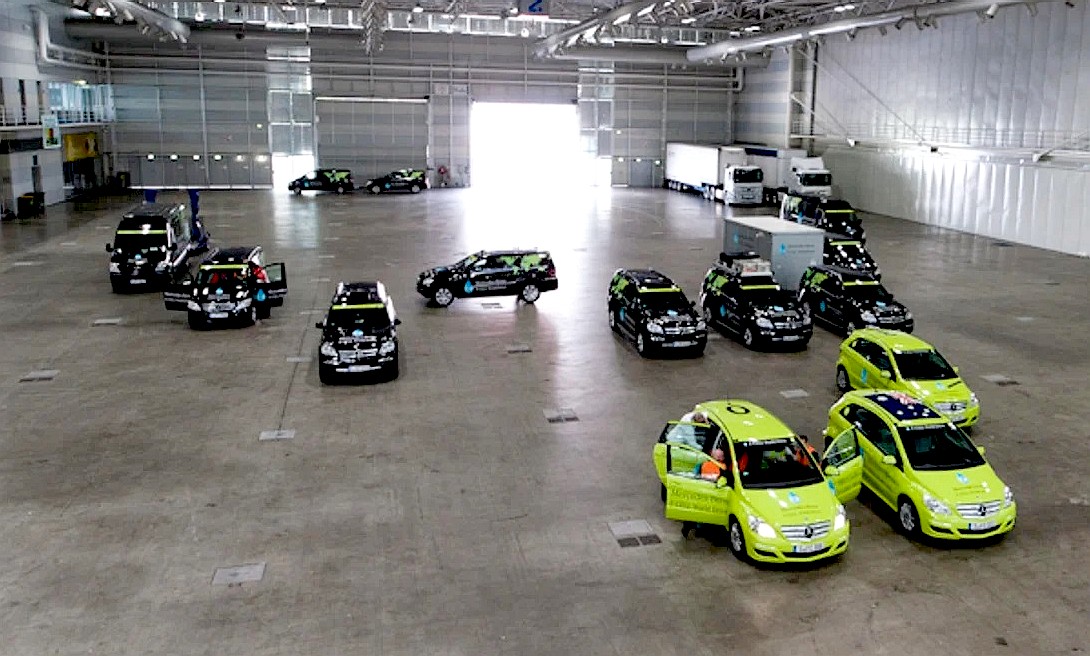
SUPPORT
CREW - The automakers partnering on this new fuel-cell vehicle bring together more than 60 years of hydrogen development and more than 6 million miles of testing. They hope that kind of experience will encourage automotive suppliers and policymakers to begin taking hydrogen vehicles seriously. But the obstacles are numerous and overwhelming.
“Hydrogen is the fuel of the future — and always will be,” is the line we’ve heard for years. And this is hardly the first time an automaker has claimed to solve the puzzle. Toyota has promised to have a fuel-cell vehicle on the road by 2015. General Motors has been pimping the technology for awhile. But it’s always been hampered by the development of infrastructure, even if there are big-rigs and even airplanes using hydrogen. Still, there is a skyrocketing number of patents that deal with the technology, so it’s not like the technology has been abandoned.
But it all comes back to fueling. Daimler, Ford and Nissan-Renault’s efforts (not to mention BMW) to bring a hydrogen fuel-cell vehicle to market are for naught if there’s no place to top off the tank. And until private entities or government institutions step up to create an infrastructure, we can have all the hydrogen fuel-cells we want, but they won’t have anything to run on.
When the F-Cells' tanks need to be refuelled, the long thin hydrogen
pressure tanks on the semi-trailer are hooked up to a compressor in the black van. The compressed hydrogen is then transferred into the cars' tanks via
a high-pressure pump nozzle.
Filling up the car's tanks using this method takes roughly 20 minutes, a fair bit longer than the three minutes
people are used to when using a forecourt pump. Though it is considerably quicker than the
four to eight hour charge times quoted for most battery electric
vehicles in 2011.
The B-Class' tanks hold 4kg of hydrogen at 70 megapascals or about 690 times atmospheric pressure at sea
level (bars). With the tanks full, the car's range is claimed to be 385km.
To prevent any nasty sparks from occurring, the black van needs to be connected to an earthing point on the B-Class.
An earthing cable isn't required when using forecourt pumps, where they are
already earthed. Hydrogen airships dropped earthing cables when coming in to
land to prevent static discharge, for precisely this reason. The Hindenburg
zeppelin is thought to have had trouble on this score, leading to the
world's worst airborne (hydrogen) tragedy.
For the F-Cell world drive, each vehicle is fitted out with two GPS units. A
yellow Tripy II unit (on the right) has the itinerary and course notes for the days when they're
traveling along the official drive route. The TomTom Go unit on the left is fitted out with worldwide maps so the fleet can find their way around strange new towns for photography, press events and
refreshments.
Excluding press and off days, the three F-Cells will cover 30,000km in the first
circumnavigation of the world in fuel cell vehicles.
Not quite as impressive as Jules
Verne's Around the World in 80
Days, the Mercedes-Benz team opted for a more leisurely 125 days.
Excluding press and off days, the three F-Cells will cover 30,000km in the first circumnavigation of the world in fuel cell
vehicles, albeit, not under their own power when being transported over
water.
Along with the three B-Class hatchbacks, a small army of GL-Class four-wheel drives and Mercedes vans
also made the trek.
NOT FOR SALE
By 2012, Mercedes-Benz will have produced 200 commercially available units of the current generation B-Class F-Cell. You can't just
roll up to a Mercedes-Benz dealer and buy one though; the cars are only for lease, and only to selected individuals, companies and government departments.
Hence, these rentals are akin to carefully controlled experiments. 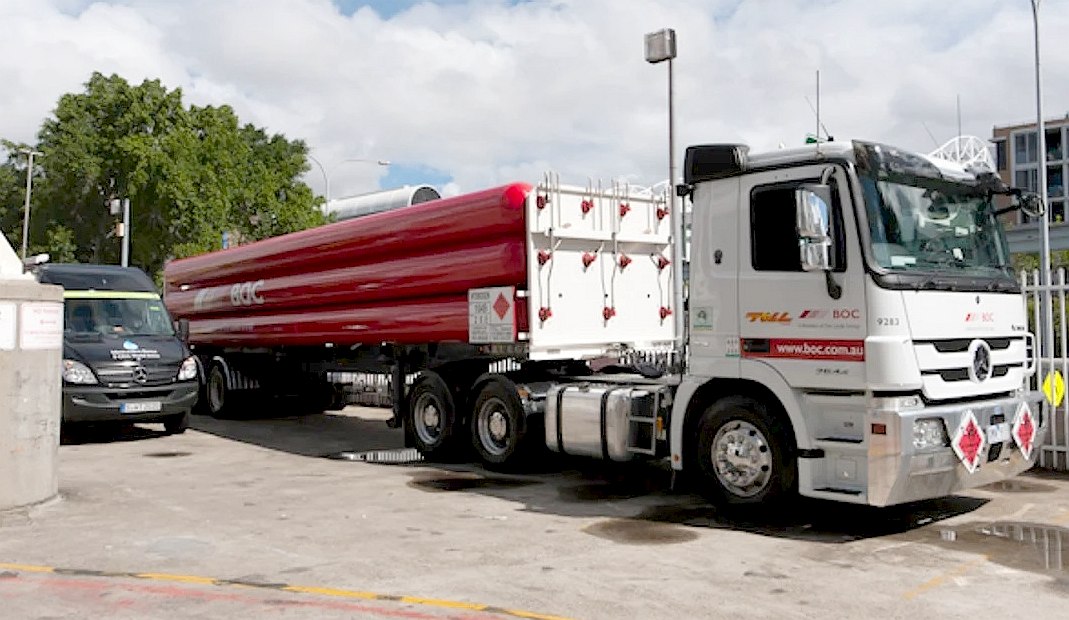
DETROIT
CAR SHOW - Mercedes-Benz of Germany called on governments and utility companies across the world to help kick-start the use of fuel cells in cars by investing in a hydrogen infrastructure.
Mercedes, in a media presentation at the Detroit Car Show, said it will have 70 fuel-cell powered B-class vehicles on the road soon in California to help prove the concept. The company is promoting an around the world tour by the fuel-cell B Class, starting in Vancouver, Canada at the end of January, to promote the concept and prove its viability. The trip will last 125 days.
Mercedes said fuel cell cars are now at the same stage of development as early internal combustion engines in the late nineteenth century, when drivers had to buy gasoline from drug stores.
If fuel cells are too succeed, they first need a ready supply of hydrogen, Mercedes said.
The fuel-cell B class has a range of 200 miles on one tank of fuel, and takes about three minutes to refill, if you could find a hydrogen filling station.
Mercedes is planning to unveil an all-new second generation CLS later this year, a new C-class, SLK roadster and M class SUV with a Bluetec diesel engine.
According to Daimler CEO Dieter Zetsche, Mercedes had a great year in 2010. No doubt it will be even better in 2011,” he said.
Sales in the U.S. are expected to improve too, according to Mercedes officials at the presentation.
Mercedes’ U.S. sales rose 14 per cent in 2010 to 216,448, including Sprinter vans and Smart cars. That left Mercedes in third place amongst the luxury carmakers. Lexus was first with 229,329, while BMW was second with 220,113.
At the end of the presentation Zetsche unveiled an electric version of its iconic gull-wing, two-seater roadster. The SLS AMG E-cell has four-electric motors producing 525 hp and 649 lb ft of torque, and will go into production in 2013. The car can blast from rest to 60 mph in 3.7 seconds. The battery has an energy content of 48 kWh. Mercedes didn’t disclose the range of the car.
Former Commodores singer Lionel Ritchie used to perform at Mercedes events, but he has been replaced by Grammy award winner Colbie Caillat, who ended the Mercedes presentation with a song.
NO INFRASTRUCTURE
According to Mercedes' hydrogen fuel partner Linde and its Australian subsidiary BOC, the technology that's currently being
utilized to produce hydrogen is quite mature, and all that's required for mass production of fuel cell cars to begin is big business and government getting together to collaborate on rolling out refuelling infrastructure.
Since 2011, things have not progressed much on the infrastructure front. Reliance on oil and complacency on the part of politicians being lobbied by oil companies, allowed a situation to develop were
bushfires, floods, melting ice caps, sea level rise, and rising temperatures were the signature headlines of 2020 into 2021. No doubt this will be on the agenda for
COP
26, but will the parties now sign on the dotted line, with China, about to throw in the towel with threats of war. Why bother to compete on the world stage with cheap exports to boost income, if you are going to subject your country to all out conflict, and possible itchy trigger fingers on the nuclear launch
button. 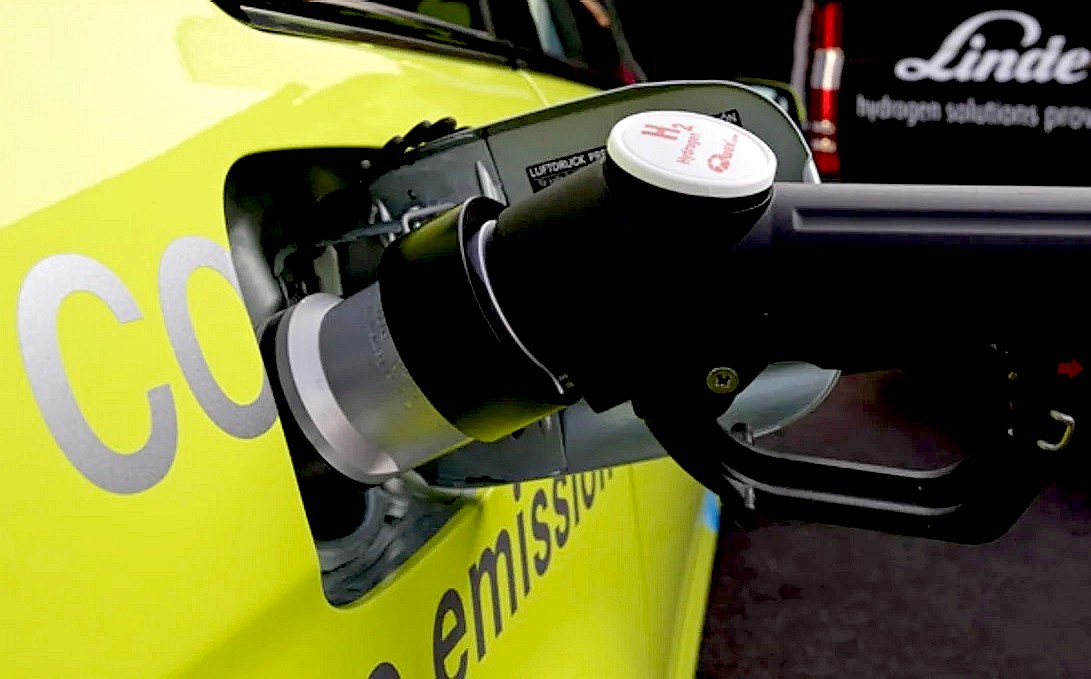
RECAP
OF F-CELL WORLD DRIVE LEGS 24-27:
After a 9000-kilometre journey through China and Kazakhstan and some 25,000 locally emissions-free kilometres covered, our three fuel-cell vehicles crossed the final continental boundary of the tour on 15 May 2011: the 107th day of the F-CELL World Drive saw the tour head from Chelyabinsk to Ufa in Russia, and from there back to Europe, marking the successful crossing of the fourth continent of the journey, Asia. Just five countries remain for participants over the final 5000-kilometre leg of the tour, which is scheduled to finally return to Stuttgart on 1 June after 125 days.
Our three B-Class F-CELL vehicles are expected to cover more than 3000 kilometres on their journey through Russia before crossing into Finland on 23 May, and then on to the home straight via Scandinavia. The first stage on Russian soil, which leads from Chelyabinsk to the capital Moscow over four days, brings the tour back to Europe.
Mercedes-Benz F-CELL World Drive in Europe – Leg 24: From Moscow to St. Petersburg
From the Russian capital Moscow, the F-CELL World Drive starts on its 24th leg on May 20. During three days, the vehicles travel 800 kilometers to St. Petersburg. One day before, local media took the opportunity to test drive the locally emission-free B-Class F-CELL in Moscow.
Mercedes-Benz F-CELL World Drive in Europe – Leg 25: From St. Petersburg to Helsinki
On May 23, the F-CELL World Drive embarks on one of the shortest legs of the world tour: the one-day trip leads the participants from St. Petersburg in Russia into the finish capital Helsinki, thereby covering 450 kilometers. The journey then will continue from Helsinki to Stockholm via ferry.
Mercedes-Benz F-CELL World Drive in Europe – Leg 26: From Stockholm to Oslo
From Stockholm in Sweden, the tour embarks on a 550 kilometers-journey to the neighbouring country Norway, to Oslo. The interest in fuel cell technology there is great: After Germany and the USA, Norway will be the third market where the B-Class F-CELL will be introduced. Also, on May 27, representatives of the local media have the opportunity to learn about fuel cell technology in Oslo.
Mercedes-Benz F-CELL World Drive in Europe – Leg 27: From Oslo to Hamburg
On May 28 the F-CELL World Drive embarks on a two-day trip, leading it towards its destination Germany, where the tour departed from in January. From Oslo in Norway via Malmö in Sweden the route leads to Hamburg. The vehicles thereby cover a distance of 1.200 Kilometer in four countries. Before the beginning of this leg, media representatives in Oslo took the chance of a press event to learn about the emission-free fuel cell technology, which will soon be available in Norway.
Update: 06/01/2011
Mercedes-Benz F-CELL World Drive in Europe – Leg 28: From Hamburg to Stuttgart
On May 30, the fuel cell vehicles will embark on the last leg of the F-CELL World Drive, leading them from Hamburg via Berlin and Nuremberg to the Mercedes-Benz Headquarters in Stuttgart. About XXX guests will then welcome the convoy after its 125-day trip in the course of a festivity, taking place in the Mercedes-Benz Museum. Furthermore, the Stuttgart-based automotive manufacturer hosts events in Hamburg, Berlin and Nuremberg in order to draw attention to the potential of fuel cell technology and the need for a comprehensive hydrogen infrastructure. 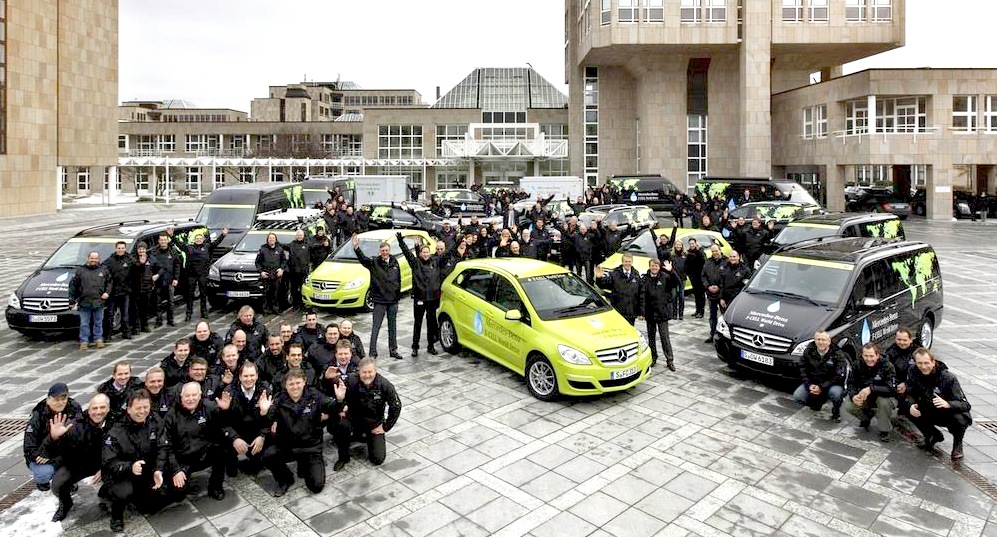
SUCCESSFUL
CONCLUSION - PRESS RELEASE 1 JUNE 2011 The "Mercedes-Benz F-CELL World Drive" – the first round-the-world drive with fuel-cell vehicles - successfully concluded on schedule
on the 1st of June in Stuttgart. After more than 30,000 kilometers, three Mercedes-Benz B-Class F-CELL vehicles with zero local emissions drivelines crossed the finish line in front of the Mercedes-Benz Museum in Stuttgart. The hydrogen-powered B-Classes and their support vehicles set off from Stuttgart at the end of January on the occasion of the official 125th birthday of the automobile, and on their way have crossed through 14 countries on four continents.
"With the F-CELL World Drive we have shown, that the time for electric vehicles with fuel cell has come. Now the development of the infrastructure has to pick up speed," said Dr. Dieter Zetsche, Chairman of the Board of Management and Head of Mercedes-Benz Cars. "For only an adequate number of hydrogen fueling stations enables car drivers to benefit from the advantages of this technology: high range, short refueling times, zero emissions.
Hydrogen infrastructure challenge
Within the scope of the F-CELL World Drive, the Mercedes-Benz B-Class F-CELL was functioning as an ambassador for a new, zero-emissions auto-mobility of the future. At the same time, Mercedes-Benz was lobbying extensively for the establishment of a comprehensive network of hydrogen fueling stations – a crucial factor for the market success of this technology. So far, there are only approximately 200 fuel stations worldwide at which fuel cell vehicles can be refueled. According to expert calculations, a network of around 1,000 fixed fuel stations would be sufficient for basic nationwide coverage in Germany. A central aim of Mercedes-Benz is to see to it that, in future, drivers all over the world will be able to refuel with hydrogen – just as they do today with gasoline and
diesel fuel.
The exclusive partner for hydrogen supply on the F-CELL World Drive was the Linde Group. Thanks to its hydrogen expertise and global presence, it was able to guarantee fuel supply throughout the entire world trip. A jointly developed mobile refueling unit based on a Mercedes-Benz Sprinter accompanied the tour – the only way to ensure fuel supply even on the most remote stretches.
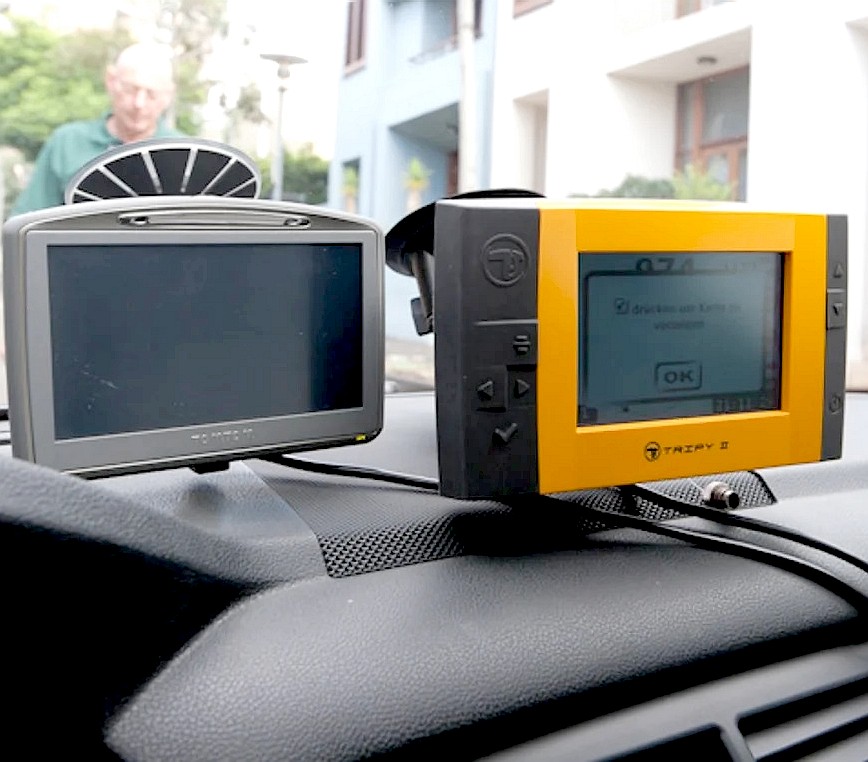
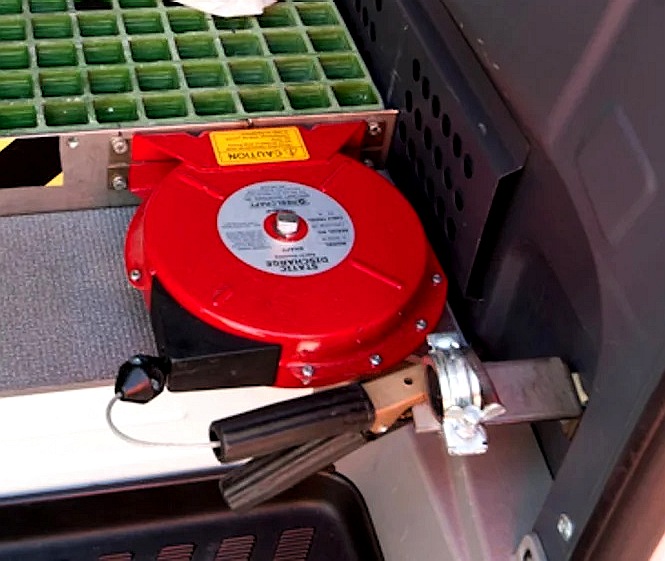
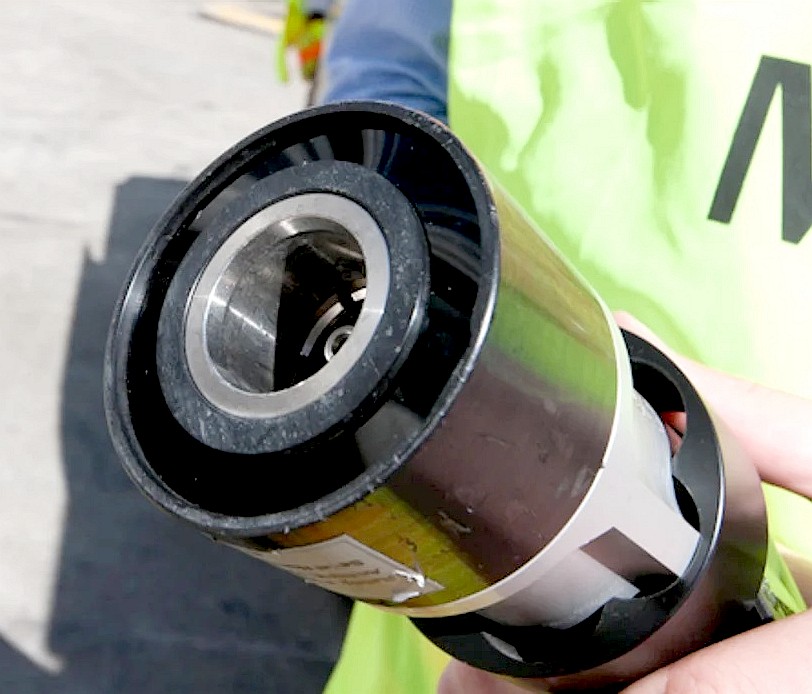
2011 1 JUNI - Absolviert der Konvoi aus drei Mercedes-Benz
B-Klasse F-CELL und den Begleitfahrzeugen der Tour seine letzte Etappe zum endgültigen Ziel Stuttgart. Dort wird der weit gereiste Tross gegen 17 Uhr am Mercedes-Benz Museum von Dr. Dieter
Zetsche, Vorstandsvorsitzender der Daimler AG und Leiter Mercedes-Benz Cars, Dr. Thomas Weber, im Vorstand der Daimler AG verantwortlich für Konzernforschung und Mercedes-Benz Cars
Entwicklung, sowie Joachim Schmidt, Leiter Vertrieb und Marketing Mercedes-Benz Cars, in Empfang
genommen. Interessierte haben bereits ab 15 Uhr die Möglichkeit, Elektrofahrzeuge des Stuttgarter Automobilkonzerns zu
erleben. Die B-Klasse F-CELL, der smart fortwo electric drive, die A-Klasse E-CELL sowie der Vito E-CELL stehen zur Testfahrt zur Verfügung. Experten aus den Fachbereichen des Unternehmens beantworten darüber hinaus gerne Fragen rund um die Brennstoffzellentechnologie und den F-CELL World Drive.
Proof of the everyday usability of fuel-cell drive
During the F-CELL World Drive, Mercedes-Benz was able to provide an impressive demonstration of the qualities of its fuel cell vehicles in terms of performance and robustness. The World Drive vehicles drove not only in downtown areas, on country roads and lengthy stretches of highway, but also proved their capabilities driving on unfinished surfaces, for example on stages in Australia and China.
Even a no-fault accident in Kazakhstan was unable to stop the B-Class F-CELL. On the route from Almaty to Balkhash, the number-three B-Class F-CELL was rammed on its rear left fender. The rear axle and bumper of the fuel-cell car both sustained damage. However, the fuel cell vehicle was repaired in a nearby workshop and continued its way around the world. Only a small dent in the bodywork bears testament to this single incident.
Round the world with hydrogen – the tour in figures
Over a total of 70 driving days, participants in the F-CELL 'World Drive' collected an abundance of travel notes documenting the multi-faceted aspects of the tour and, at the same time, underscoring the everyday usability of the fuel cell technology on board the B-Class F-CELL. The record distance of 648 kilometers, split between two stretches of more than 300 kilometers each, was covered on the drive from Almaty to Balkhash in Kazakhstan. Another likely record is the number of inhabitants in the places visited by the tour, ranging from no more than twenty in Balladonia, Australia, to an impressive 19 million in Shanghai, China. Due to the still insufficient hydrogen infrastructure, the mobile unit, which has been developed in cooperation with the Linde AG, was used around 130 times to refuel the B-Classes. Along the route, the B-Class F-CELL vehicles were also refueled in just a few minutes at two hydrogen fueling stations.
Mercedes-Benz long-distance drives – in the tracks of Bertha Benz
With the now historic F-CELL World Drive, the first round-the-world drive with fuel cell vehicles, Mercedes-Benz is adding to a long history of legendary long-distance drives. Examples include the first crossing of Africa in a car in 1909 and the longest
diesel marathon - the "E-Class Experience" - run in 2006 over 14,000 kilometers from Paris to Beijing.
As far as its objective was concerned, the F-CELL World Drive has a direct connection to the world's very first long-distance drive – the pioneering endeavor of Bertha Benz, who, in 1888, completed the first cross-country drive with the Benz
Patent-Motorwagen from Mannheim to Pforzheim. She faced in principle the same challenge as her successors with the B-Class F-CELL – she, too, could not exactly roll into the next fuel station and top up.
In the early days of the automobile, drivers had to buy their fuel from the pharmacy, which is why Bertha Benz stopped at the town pharmacy in Wiesloch. That was the only place she could acquire the light
gasoline "ligroin" – which was actually intended for domestic use as a stain remover, but also worked as fuel. First gradually, then with increasing speed, the fuel station network expanded into the worldwide infrastructure we know today. That was a defining factor in the triumphant procession of the
internal-combustion-engine
powered automobile invented in 1886 by Daimler and Benz. With new drive systems the motto is: alternative drives need alternative
infrastructures. In the case of the B-Class F-CELL, this means hydrogen fueling stations. It is for this reason that Mercedes-Benz, as the inventor of the automobile, together with partners from commerce and politics, is lobbying heavily for the establishment of a comprehensive infrastructure – both for
electric cars with fuel cells and for those with battery-electric drive.
Honda - Nexo
Hyundai - Tucson
Toyota - Mirai
Mazda - Rx-8RE
Nissan - unnamed
BMW
- X5
LINKS
& REFERENCE https://www.wintonsworld.com/mercedes-benz-touts-fuel-cell-car-sends-it-on-world-tour/ https://emercedesbenz.com/autos/mercedes-benz/b-class/2011-mercedes-benz-f-cell-world-drive-nearly-home/ https://www.autoblog.com/2011/06/03/mercedes-benz-f-cell-world-drive-successfully-completed https://www.cnet.com/roadshow/pictures/mecedes-benz-b-class-f-cell-hands-on/10/ https://www.guinnessworldrecords.com/world-records/97489-first-circumnavigation-of-the-world-in-a-hydrogen-powered-car
https://www.wintonsworld.com/mercedes-benz-touts-fuel-cell-car-sends-it-on-world-tour/ https://emercedesbenz.com/autos/mercedes-benz/b-class/2011-mercedes-benz-f-cell-world-drive-nearly-home/ https://www.autoblog.com/2011/06/03/mercedes-benz-f-cell-world-drive-successfully-completed https://www.cnet.com/roadshow/pictures/mecedes-benz-b-class-f-cell-hands-on/10/ https://www.guinnessworldrecords.com/world-records/97489-first-circumnavigation-of-the-world-in-a-hydrogen-powered-car
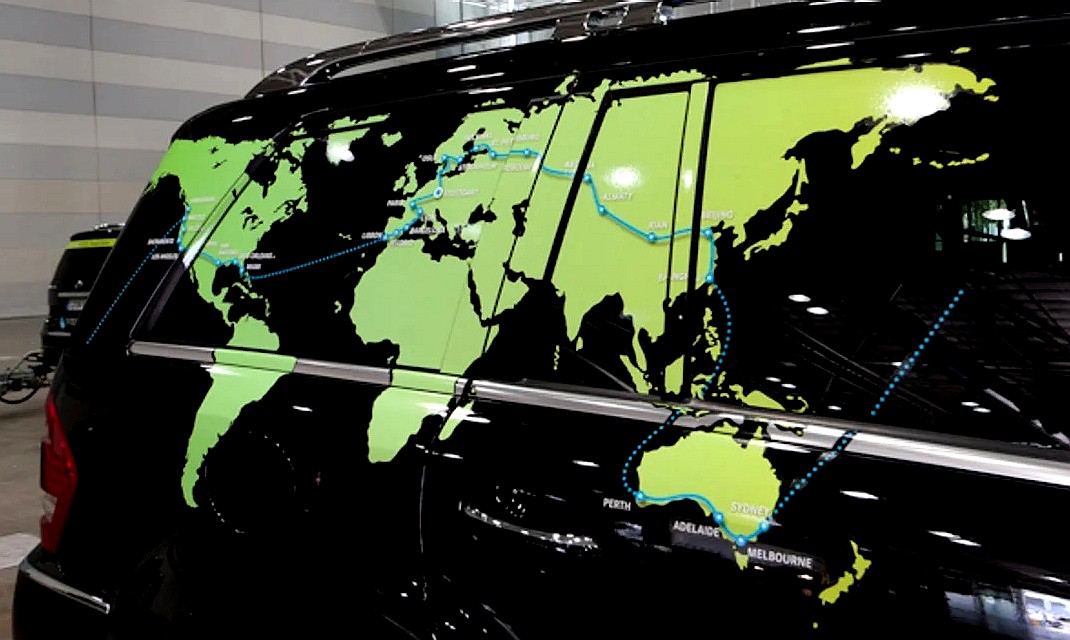
With exchange refuelling
using high pressure gas cartridges, or liquid
hydrogen cartridges, even coaches and trucks might have unlimited ranges. We hope
this is a topic of discussion at the forthcoming UN
COP 26 in Glasgow, Scotland in November 2021.
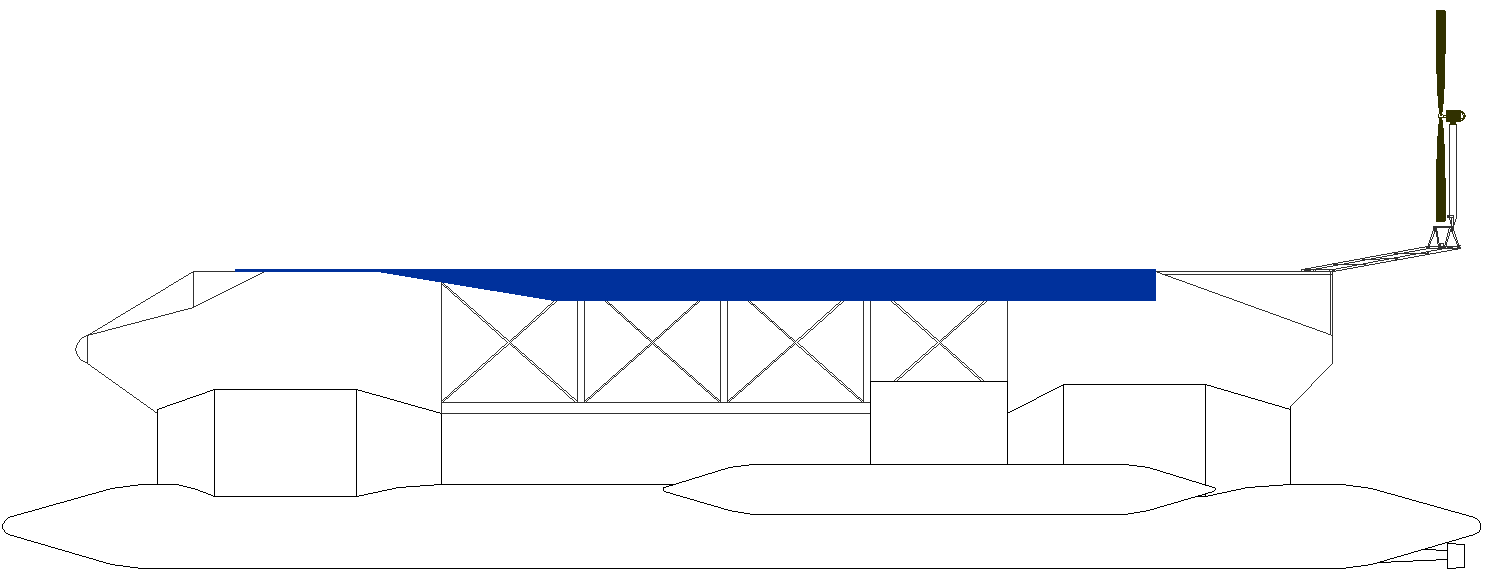
WORLD
HYDROGEN CHALLENGE
- The electrically propelled yacht above could travel Around the World in 80
Days, using cryogenic liquid hydrogen, cruising at 13 knots, but also
with renewable performance of around 10 knots in reserve. Many fleet
operators are now looking to hydrogen as a long term solution, following LNG,
that did not quite make it in time for COP26,
despite over 10 years in gestation.
Please
use our A-Z
INDEX to navigate this site
This
website is provided on a free basis as a public information service.
copyright © Climate Change Trust 2021. Solar
Studios, BN271RF, United Kingdom.
|














